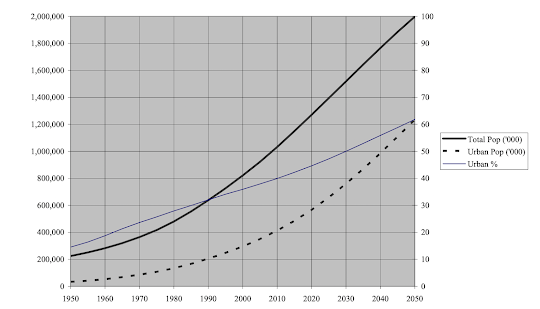An Introduction: Water and Sanitation in Africa
Safe drinking water is inaccessible to 1 in 3 people across the globe
2.2 billion people don't have access to safely managed drinking water facilities
2.2 billion people don't have access to safely managed drinking water facilities
We take for granted that the water we receive out of our taps is safe to drink. However, this isn’t the case for a large proportion of Africa where access to safe drinking water is negligent or unimproved. Although there have been efforts to increase safe drinking water within the African continent the progress seems to be slow and therefore this blog will aim to raise awareness of the issues involving access to safe drinking water from a sanitation perspective and shed light on the importance of educating people on the issues of water and sanitation.
First, we must analyse the dire consequences of what the lack of sanitation can lead to including but not limited to - diarrhoea, cholera and death. Below in figure 1, the largest share of deaths from unsafe water resources originate largely in the continent of Africa, specifically Sub-Saharan Africa. This map shows the reality of the situation of unsanitary water in Africa and highlights that action is required immediately.
Figure 1: A world map showing the share of deaths from unsafe water resources
Why do people lack access to safe drinking water?
Inaccessibility to water sources
Governments and policies
Lack of infrastructures
Failure of sufficient management of water infrastructures
Climate change exacerbates the above factors where those at the bottom are most affected
The population of Africa is projected to grow by 154% (that's a huge number!) between 2000 and 2050 so sanitation reforms need to be taken seriously. Given that the demand for water increases with population growth and economic development in Africa, the provision of and effective use of sanitation infrastructures should become a priority for policymakers. A good start is noting that effective sanitation comes from infrastructure that is accessible, fast, and easy to use.
SDG 6: by 2030, achieve universal, equitable access to safe water (6.1) and sanitation (6.2) for all
| Area of Lukaya, a town in Uganda |
This leads us to figure 3, which presents the share of the population without access to an improved water source. The largest percentages where the share of the population without an improved water resource appears to be located in Africa, showing that we should aim to focus on improving and monitoring sanitation services there. Although a large percentage of other countries across the globe have unimproved water sources notably, Papua New Guinea and Afghanistan, the continent of Africa has the largest proportion with an unimproved water source. This map follows similar trends to figure 1 showing that populations, where there is no or little access to an improved water source, is linked to disease and deaths associated with unsanitary water. Thank you for reading my introduction to my blog on assessing water and sanitation in Africa and I look forward to seeing you next time. |






Really looking forward to your post about SDG6 and the sanitation in Kampala, Uganda! I was a bit confused when you mentioned Lukaya Town in the following sentences. It will be nice if you can point out it is a town in Uganda as well as we might not be familiar with the geographies in Africa 😳
ReplyDeleteThank you for the observation! I will go ahead and edit it and make sure I make any study areas/ locations i'm looking at obvious going forward :)
DeleteThis opening post outlines well the importance and dimensions of the challenge of achieving UN SDG 6 in Sub-Saharan Africa from national-scale data. Cecilia makes an important point about being sure to contextualise well evidence from places like Lukaya Town in southwestern Uganda, not far from the western shores of Lake Victoria. Be sure to reply to comments like these.
ReplyDeleteThank you for your comment, I will make sure to make obvious the study areas I wish to talk about in my blog posts.
Delete